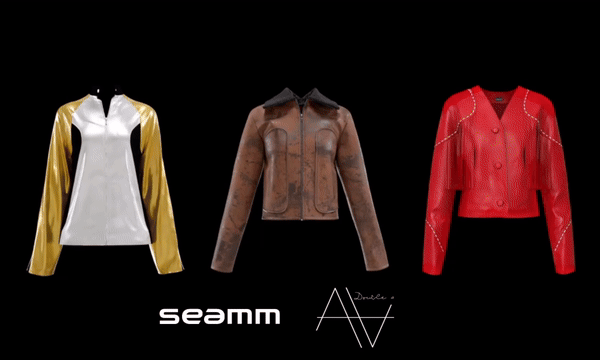How Digital Twins Transforming Fashion Industry
In the age of Web 3.0, characterized by a crowded and rapidly-changing digital landscape, digital twins offer a new way to engage with consumers and build trust by implementing innovative approaches to brand promotion and customer loyalty.KEY INSIGHTS
Digital twins aid fashion industry with waste reduction, production optimization and better customer experience.
Top fashion brands use digital twin tech to enhance products and engage customers.
Digital twins build trust and innovate brand promotion in the crowded Web 3.0 landscape.
Like many others, the fashion industry has been significantly disrupted by the digital age. Among those innovations redefining the industry, we find digital twins, which are virtual replicas of physical systems and products that are used to optimize and monitor real-world counterparts. Digital twins are now widely used in different industries, including manufacturing, energy, and healthcare, for simulation, analysis, and predictive maintenance.
In fashion, digital twins allow designers, manufacturers, and retailers to simulate the entire lifecycle of a product, from ideation to disposal, in a virtual environment, and to create virtual replicas of physical garments and collections that include their design, materials, and production details.
One of the primary benefits of using digital twins in the fashion industry is the ability to reduce waste and optimize the production process. By creating the digital twin of a garment, designers and manufacturers can test different materials, production methods, and even pricing strategies before investing in physical production. This helps to reduce the amount of material waste and minimize the environmental impact of the fashion industry.

Furthermore, digital twins can streamline the design process by allowing designers to visualize their creations in a virtual environment before producing physical samples. This can help speed up the production timeline and reduce costs associated with physical prototyping.
The components of a digital twin in fashion include a 3D model of the garment, as well as information about its materials, construction, and production details. This information is stored in a digital database and can be accessed by designers, manufacturers, and retailers throughout the production process.
Digital twins are emerging as a powerful tool in the fashion industry, offering a range of benefits for both consumers and brands. By creating digital representations of clothing and accessories, brands can offer personalized recommendations and styling advice based on each customer's unique preferences and body shape. This can help to improve the customer experience and drive up sales, while also improving the fashion industry’s environmental footprint.

Several leading fashion brands have already started utilizing digital twin technology in various ways. For instance, Adidas creates virtual replicas of its footwear and apparel to simulate how they will perform under different conditions and environments. By doing this, Adidas can make changes to its designs before they are manufactured, improving the quality and durability of its products.
Similarly, Levi's, an American denim company, has been using digital twin technology to improve the fit and quality of its jeans. The company creates virtual replicas of its customers' bodies to create personalized jeans that fit better and are more comfortable to wear. Additionally, Levi's uses digital twins to simulate how its jeans will look and feel after multiple washes, ensuring that they maintain their quality over time.
Burberry, a British luxury fashion brand, has successfully utilized digital twin technology to enhance its customer experience. The company creates virtual replicas of its stores and products, allowing customers to explore its collections and customize their own products in an immersive digital environment. Additionally, Burberry has used digital twins to simulate different store layouts and visual merchandising displays, optimizing its physical retail spaces.

Digital twins are rapidly gaining traction as a valuable tool for Web3 marketing. With growing concerns over data privacy and security, blockchain and other Web3 technologies are emerging as providers of much-needed trust and transparency for digital marketing campaigns. By utilizing digital twins, which are virtual representations of physical products, brands can provide consumers with an immutable record of a product's origin and history, as well as detailed information about its materials and production processes. This fosters trust and credibility with consumers, while also promoting sustainable and ethical practices in the fashion industry.
As Web3 technologies continue to evolve, digital twins are set to play an increasingly crucial role for marketers, enabling new ways for them to engage with consumers and build trust in a crowded and rapidly-changing digital landscape. In the age of Web 3.0, digital twins are emerging as a powerful tool for bridging the gap between the physical and virtual worlds and creating innovative approaches to brand promotion and customer loyalty.


One industry that is leading the way in adopting digital twins is fashion, with startups like Seamm pioneering new methods for combining physical garments with digital twins. When a customer purchases a product through Seamm, they receive a digital twin that can be activated through a QR code. This twin is added to the user's virtual wardrobe within the Seamm app, providing an exact copy of the item they bought, complete with an authenticity identifier and a range of unique features.
These digital twins can also be transferred to the virtual world of video games and metaverses, adding value to the virtual assets of fashion companies. Ownership ID can be used to convert these digital twins into entry credentials for a brand's customized loyalty program, offering tiers, rewards, and discounts. Through participation in these programs, customers feel more connected to the brand and its values, as well as to a community of like-minded individuals.
By leveraging digital twins, fashion companies can create new revenue streams, build thriving communities, and develop targeted sales pitches and tailored marketing strategies. Having said this, the utilization of digital twins in the fashion industry is still in its infancy, and its further exploration offers an exciting wide array of opportunities with a high potential to create high economic and social value.


